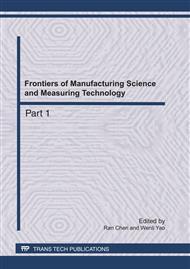p.339
p.346
p.352
p.357
p.362
p.367
p.372
p.377
p.384
Structural Dynamic Reliability on Supercavity Vehicle
Abstract:
Dynamic reliability of supercavity vehicle is investigated. The vehicle is modeled as thin shells, using eight-node super-parametric shell elements. To deal with the tail of supercavity vehicle structures subjected to stationary random excitations, and the wave passage effect must be considered, an efficient method, the Pseudo Excitation Method, is suggested. The stationary random excitation is transformed into a deterministic transient excitation. The response can be obtained by Newark method, at last dynamic reliability of supercavity vehicle can be got base on the rule of first excursion failure. Examples show that this method is simple, efficient and has good precision.
Info:
Periodical:
Pages:
362-366
Citation:
Online since:
May 2011
Authors:
Price:
Сopyright:
© 2011 Trans Tech Publications Ltd. All Rights Reserved
Share:
Citation:


